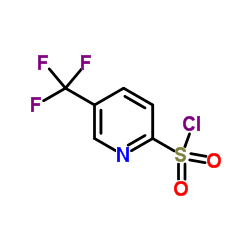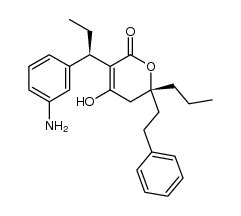| Description |
Tipranavir inhibits the enzymatic activity and dimerization of HIV-1 protease, exerts potent activity against multi-protease inhibitor (PI)-resistant HIV-1 isolates with IC50s of 66-410 nM.
|
| Related Catalog |
|
| Target |
IC50: 66-410 nM (HIV-1 isolates)[1]
|
| In Vitro |
Tipranavir (TPV) inhibits the enzymatic activity of HIV-1 protease, blocks the dimerization of protease subunits, and exerts potent activity against a wide spectrum of wild-type and multi-PI-resistant HIV-1 variants. When a mixture of 11 multi-PI-resistant (but TPV-sensitive) clinical isolates (HIV11MIX), which include HIVB and HIVC, is selected against Tipranavir, HIV11MIX rapidly (by 10 passages [HIV11MIXP10]) acquires high-level Tipranavir resistance and replicates at high concentrations of Tipranavir. cHIVBI54V and cHIVBI54V/V82T are significantly resistant to TPV, with IC50s of 2.9 and 3.2 μM, respectively, which are 11- and 12-fold increases in comparison to the IC50 against cHIVB, respectively[1].
|
| In Vivo |
Tipranavir (TPV) is administered orally twice daily and must be given in combination with low-dose ritonavir (RTV) to boost Tipranavir bioavailability. In Tipranavir/r-cotreated mice, the Tipranavir abundance in the liver, spleen, and eyes is significantly higher than that in mice treated with Tipranavir alone. Tipranavir metabolites accounts for 31 and 38% in the serum and liver in the Tipranavir-alone group. In Tipranavir and Tipranavir (TPV/r)-cotreated mice, only 1 and 2% of metabolites are detected in the serum and liver. Sprague-Dawley rats are administered a single dose of [14C]Tipranavir with coadministration of RTV. The most abundant metabolite in feces is an oxidation metabolite. In urine, no single metabolite is found to be significantly present[2].
|
| Kinase Assay |
Thirty 50% tissue culture infectious doses (TCID50s) of each of the 11 highly multi-PI-resistant HIV-1 isolates is mixed and propagated in a mixture of an equal number of PHA-PBMCs (5×105) and MT-4 cells (5×105), in an attempt to adapt them for replication in MT-4 cells. The cell-free supernatant is harvested on day 7 of coculture (PHA-PBMCs and MT-4 cells), and the viruses (designated HIV11MIXP0, where P0 represents passage 0) are further propagated in fresh MT-4 cells for the selection experiment. On the first passage, MT-4 cells (5×105) are exposed to culture supernatant of mixed viruses or 500 TCID50s of each infectious molecular HIV-1 clone and cultured in the presence of Tipranavir at initial concentrations of 0.1 to 0.4 μM. On the last day of each passage (approximately day 7), 1 mL of the cell-free supernatant is harvested and transferred to a culture of fresh uninfected MT-4 cells in the presence of increased concentrations of the drug for the following round of culture. In this round of culture, three drug concentrations (increased by 1-, 2-, and 3-fold compared to the previous concentration) are employed. When the replication of HIV-1 in the culture is confirmed by substantial Gag protein production (greater than 200 ng/mL), the highest drug concentration among the three concentrations is used to continue the selection (for the next round of culture). This protocol is repetitively used until the drug concentration reaches the targeted concentration. Proviral DNA samples obtained from the lysates of infected cells are subjected to nucleotide sequencing[1].
|
| Animal Admin |
Mice[2] All mice (2-4 months old) are maintained under a standard 12-h dark and 12-h light cycle with water and chow provided ad libitum. For metabolomic analysis, Tipranavir (40 mg/kg) is administered via ball-tipped gavage needles, and the mice are housed in separate metabolic cages for 18 h. Urine and feces samples are collected and stored at −20°C for further analysis. For tissue distribution and inhibition studies, three groups of mice are used and are orally treated with Tipranavir (100 mg/kg), RTV (40 mg/kg), and Tipranavir/r (100 mg/kg Tipranavir and 40 mg/kg RTV), respectively. Tissues including the liver, brain, lung, kidney, spleen, and eyes are collected 30 min after treatment and stored at −20°C for further analysis.
|
| References |
[1]. Aoki M, et al. Loss of the protease dimerization inhibition activity of tipranavir (TPV) and its association with the acquisition of resistance to TPV by HIV-1. J Virol. 2012 Dec;86(24):13384-96. [2]. Li F, et al. Metabolism-mediated drug interactions associated with ritonavir-boosted tipranavir in mice. Drug Metab Dispos. 2010 May;38(5):871-8.
|

 CAS#:174485-72-4
CAS#:174485-72-4 CAS#:174485-90-6
CAS#:174485-90-6 CAS#:33698-85-0
CAS#:33698-85-0![(4R)-3-[(3S)-3-[3-(dibenzylamino)phenyl]pentanoyl]-4-phenyl-1,3-oxazolidin-2-one Structure](https://image.chemsrc.com/caspic/282/174590-40-0.png) CAS#:174590-40-0
CAS#:174590-40-0![[R-(R*,R*)]-3-[1-[3-[Bis(phenylmethyl)amino]phenyl]propyl]-5,6-dihydro-4-hydroxy-6-(2-phenylethyl)-6-(1-propynyl)-2H-pyran-2-one Structure](https://image.chemsrc.com/caspic/174/188559-25-3.png) CAS#:188559-25-3
CAS#:188559-25-3![(4R)-3-[(2S,3S)-2-Acetyl-3-[3-[bis(phenylmethyl)amino]phenyl]-1-oxopentyl]-4-phenyl-2-oxazolidinone Structure](https://image.chemsrc.com/caspic/081/188559-10-6.png) CAS#:188559-10-6
CAS#:188559-10-6![(2S,5R)-2-[(1S)-1-[3-(dibenzylamino)phenyl]propyl]-5-hydroxy-1-[(4R)-2-oxo-4-phenyl-1,3-oxazolidin-3-yl]-5-(2-phenylethyl)oct-6-yne-1,3-dione Structure](https://image.chemsrc.com/caspic/288/188559-22-0.png) CAS#:188559-22-0
CAS#:188559-22-0![[R-(E)]-3-(1-Oxo-2-pentenyl)-4-phenyl-2-oxazolidinone Structure](https://image.chemsrc.com/caspic/098/188559-05-9.png) CAS#:188559-05-9
CAS#:188559-05-9 CAS#:29898-25-7
CAS#:29898-25-7 CAS#:99-61-6
CAS#:99-61-6